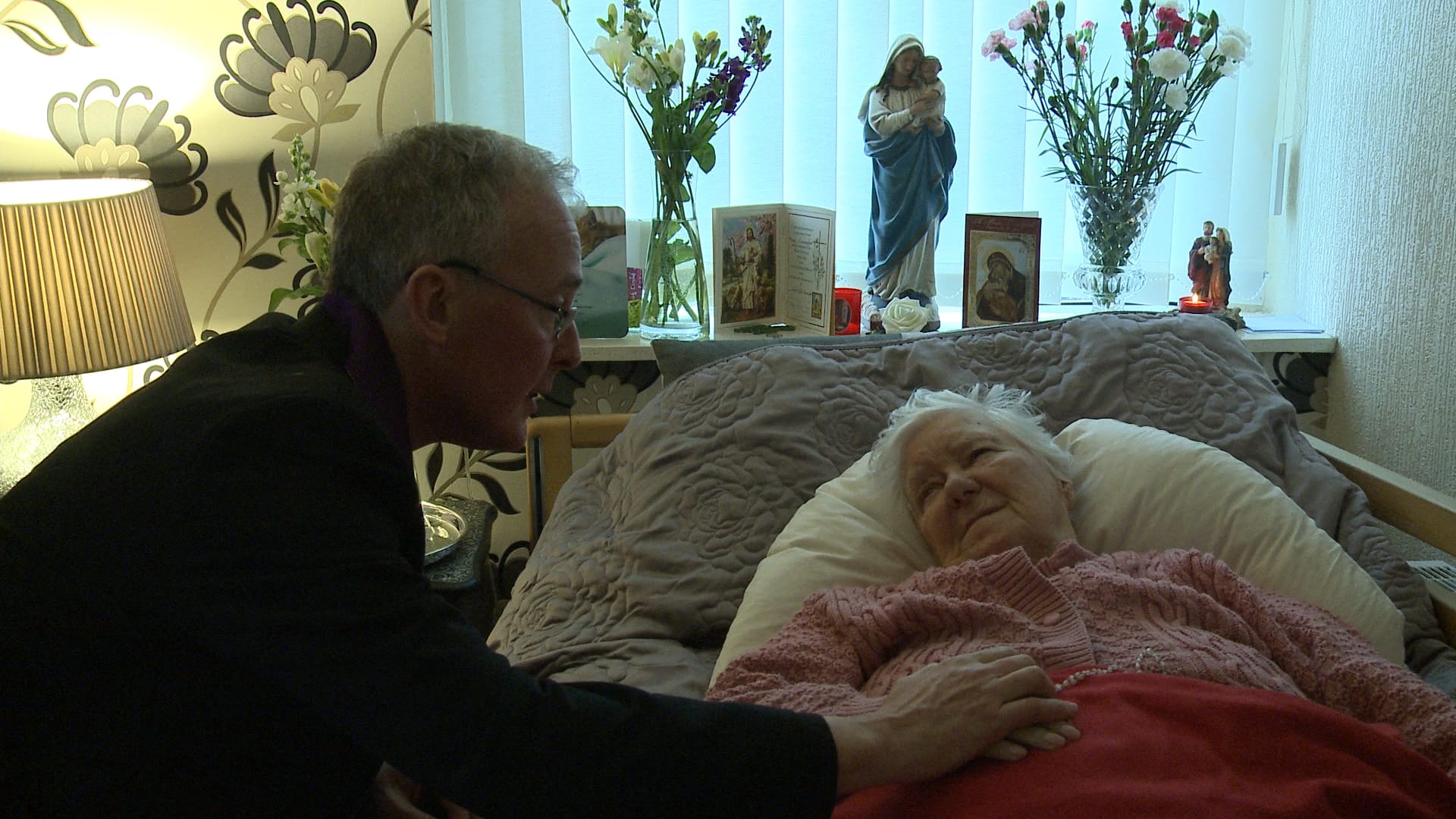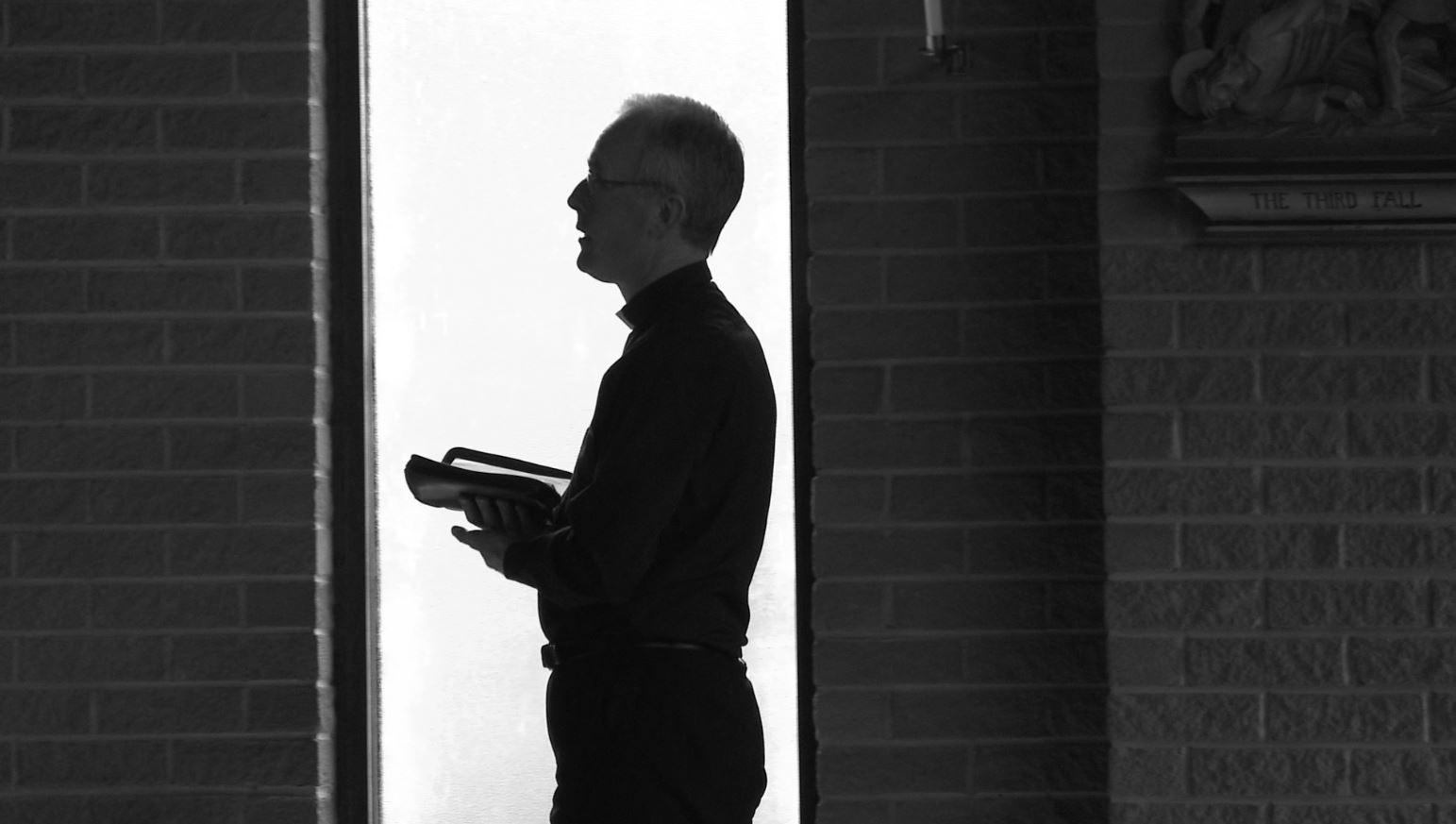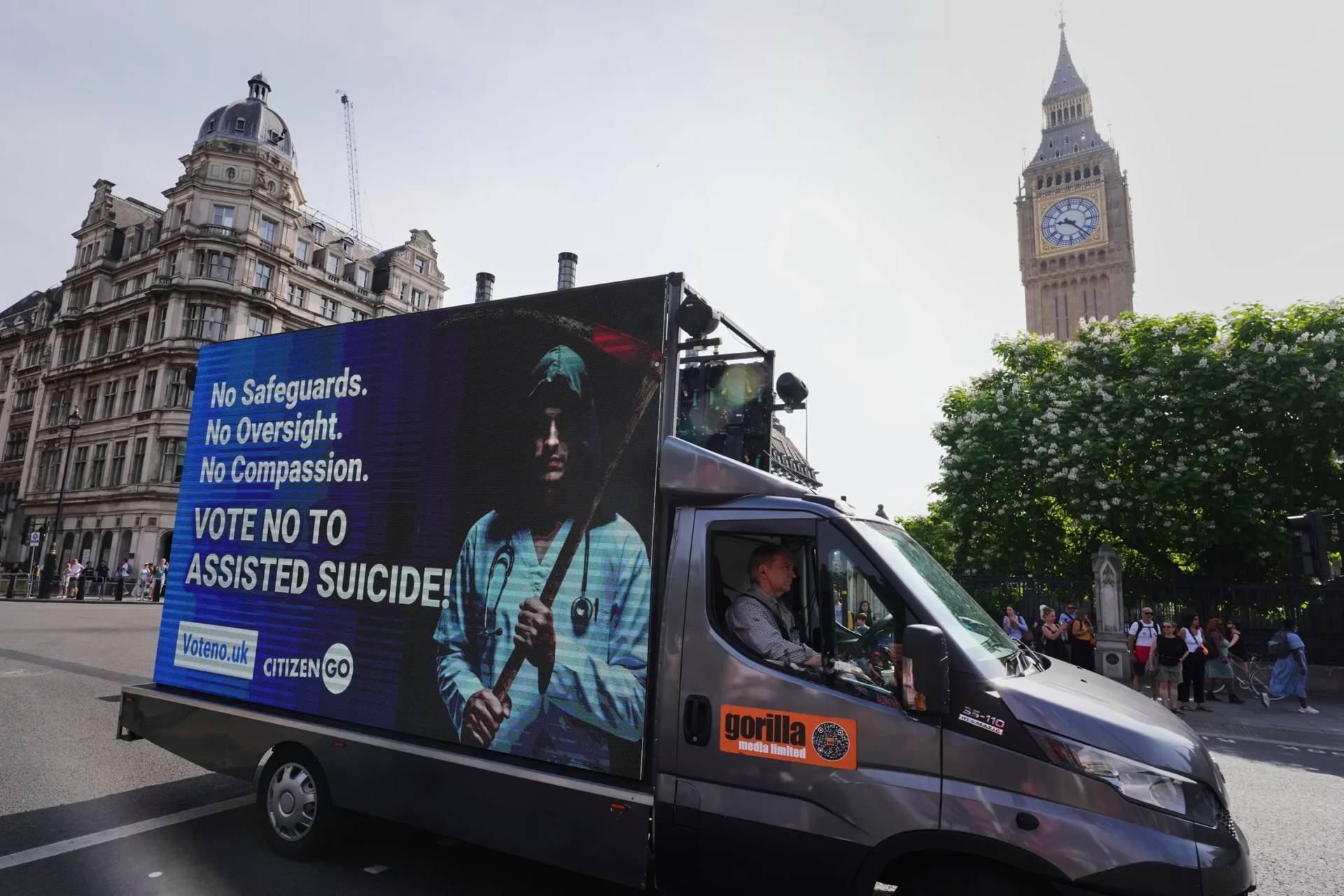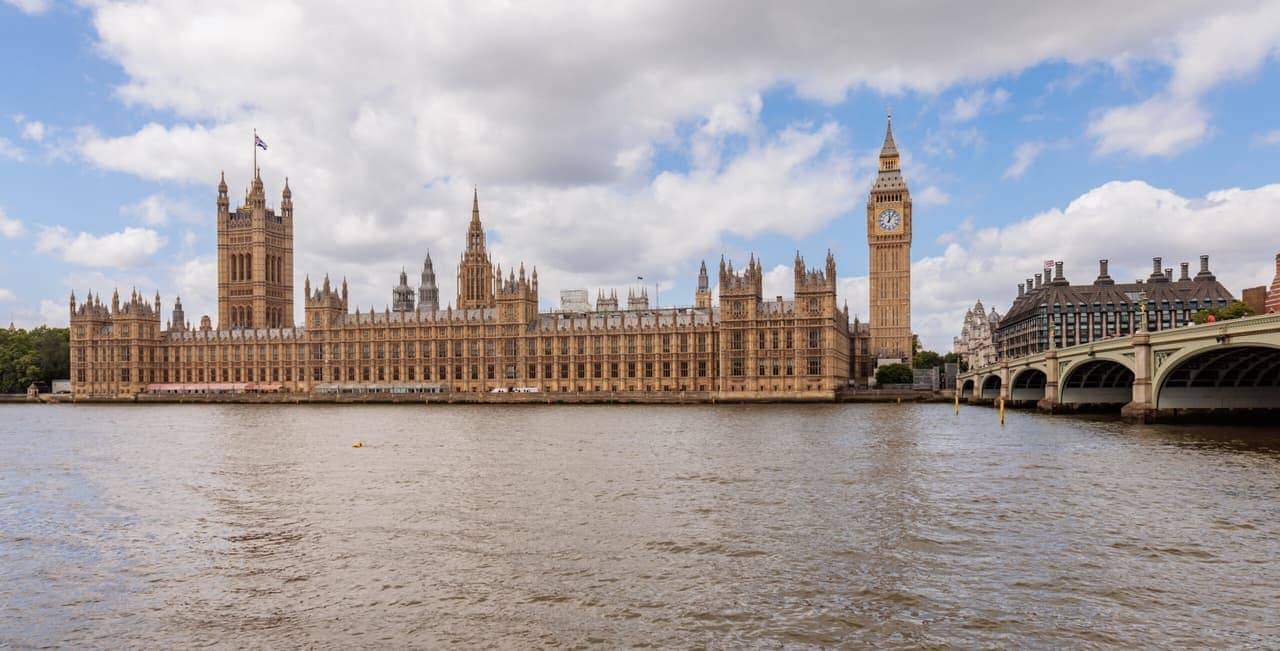LEICESTER, United Kingdom – Father Paul Grogan is an ordinary priest in Bradford, in the north of England, but his life is extraordinary.
His story is told in the documentary The Priest, which tells the story of Mary, Mother of God Catholic parish from the beginning of Lent until Easter Sunday.
“I just want to see what it is like to be with a priest for a period of time,” said Michael Whyte, the film’s creator.
“I think people have a sort of rather narrow view of the priesthood and that it’s you know they they do Mass a few times week that’s about it – maybe they’ll take the odd confession and stuff like that – but generally speaking, it’s a relatively easy job and everything is alright with them because they’ve got God on their side,” he said.
“I felt that there’s a human element to the priesthood: The man himself and what he goes through on a personal level and how difficult it is or how trying, and I had no idea,” Whyte told Crux.
Grogan gave Whyte complete access, and the film includes everything from baptisms to funerals.
“Michael’s camera allowed me to gaze upon my own life and work from a perspective outside of myself. A young couple mourn the death of their severely disabled child – and I get to spend time with them in their grief. An elderly woman is dying – and it is to me that she says the simple lapidary words which are etched in my memory: ‘I am not afraid of dying.’ Two adults with learning difficulties look forward to receiving the First Sacraments and I get to share with them as best I can what it all means,” the priest said.
Whyte told Crux the most surprising thing about following Grogan around was the amount of work he did.
“I don’t think people do realize how hard priests work. Everybody thinks their own vocation is incredibly hard and stressful… but I felt that following Father Paul – he has one day off a week, and during that one day off he spends his time thinking about the problems in the parish – but the rest of the time he’s either meeting people, or he is in the Divine Office or his sorting out some of the finances in the parish. It’s non-stop,” he said. “He could receive a call at 10 in the evening from parishioner or requiring help or something like that, so it seemed to me extremely demanding, not just physically but also emotionally as well, so that that was a big surprise,” he added.
One scene in the film shows a woman shouting at Grogan, accusing the Church of failing their family at a time of grief.
“I was so defensive when a widow criticized me for not having visited her just-deceased husband sufficiently regularly that I wrote a letter to her, trying to justify myself. It was a cruel and cowardly thing to do and her niece properly upbraids me, at some length, in the film,” Grogan said.
However, Whyte defended the priest.
“He’s stretched in an awful way, and he did [his pastoral work] with considerable patience and diligence,” the director said.
“He doesn’t really have enough time to do all the visits [to the sick] that he would like … to do that you can’t just pop in and say ‘here’s the sacrament, than you very much and I’ll see you in a few weeks.’ He spends time with them, and that might be an hour or an hour-and-a-half,” he told Crux. “I think Father Paul agrees that she had a point, but it seemed to me to be very unfair because she was unaware of the pressures and the workload that he had.”
Whyte said Grogan never put any pressure to remove the scene from the documentary.
“He just said, that’s a very fair reflection, and made no attempt to apply any kind of restraint on that footage,” he said.
“I do know now – since the film, otherwise I would have included it but it happened quite a while after doing the film – he has repaired relations with that woman,” he added.
The most emotional part of the film was probably the deathbed scene featuring parishioner Mary Cunningham.
The terminally ill Cunningham had been visited by Grogan early in the filming process, and agreed to allow the filmmakers in the room when the priest gave her Last Rites.
“I had two thoughts: One, I should not be in this room, intruding on this very private and intimate time and second this is a powerful scene showing the value of the priesthood as Father Paul commits Mary into the arms of God,” Whyte said.

He told Crux some people found the scene upsetting, but he said it was necessary.
“On a filmmaker’s perspective, this is exactly the kind of scene I need to show in order to show the life of a priest,” he explained.
“The family of Mary Cunningham saw the film when I showed it to the parishioners, and they talked to me about it afterwards,” he added. “It brought back rather tearful memories, but they were not wanting me to not include it in the film.”
Whyte is not Catholic, but the Church has featured in his work before. His 2009 documentary No Greater Love documented life at the cloistered Carmelite convent of the Most Holy Trinity in London, and 2011’s Relics & Roses followed the UK tour of the relics of St. Thérèse of Lisieux.
He said the life of the nuns and a parish priest are very different experiences.
“I think it’s a more settled life on one level, because they have a routine. It’s not that every day is the same, because you know things are not quite the same, but it’s centred around prayer and meditation,” he said.
“Obviously they do face problems that you know coming to terms with that kind of life it is quite difficult and there in a very enclosed environment and their silence which must had quite a lot of getting used to the idea that you spend your most of the time in silence,” Whyte continued. “On the whole it’s a very gentle, very contemplative life. That’s not to say it’s easy. I should think it’s quite difficult, and certainly I think in the sisters I spoke to said the first few years are extremely difficult as you get used to this.”
On the other hand, a parish priest is in the community and interacting with everyone.
“He is seeing people over time and he is getting that kind of stimulus and obviously getting a reward: If he does something with a parishioner or a family within the community that has been very helpful, they are very quick to thank him and so he gets that encouragement to go further in that sense,” he said.
Bishop Marcus Stock of Leeds said the filmmaker’s latest project is a “fly-on-the-wall” view of the day-to-day life and ministry of a parish priest in his diocese.
“It captures the breadth of ministry and demonstrates the privileged access that a priest is given to the lives of people during vital moments of great joy and profound grief. Frankly and honestly, it depicts some of the highs and lows in parish ministry but also allows the deep personal faith and commitment of the priest to shine through in all that he undertakes in the name of Christ and the Church,” Stock said.
Whyte said The Priest is a film that shows the real face of the priesthood.
“It shows the priest as a fallible person, as opposed to somebody that is elevated and can do no wrong in that sense,” he told Crux.
“The Priest” is available on Amazon Prime and Amazon Prime UK.
Follow Charles Collins on Twitter: @CharlesinRome
















